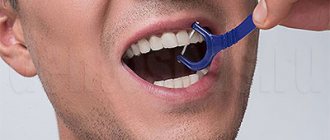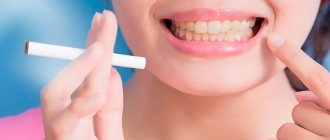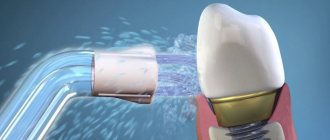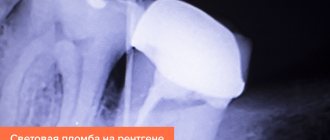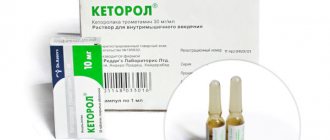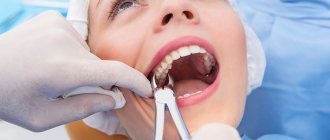Everyone wants to be the owner of a beautiful snow-white smile. This is why professional teeth whitening has become so popular recently. But in order for the result to be maximum and last a long time, you need to follow some rules for oral care. If you do not follow the specialist’s recommendations, fairly soon after the procedure your teeth will return to their previous shade.
How to behave after the whitening procedure?
- What recommendations should you follow?
- Soreness after a session: what does it mean?
- Dietary advice: what is prohibited?
- What is better to forget: bad habits
After a procedure that improves the shade of the dental surface, each of us has a rational question: “What to do after teeth whitening and what is it better to refrain from so that the effect lasts as long as possible?”
At first, after exposure, teeth become especially sensitive to various negative factors; they require high-quality and constant care. There is a list of rules that must be followed. It is their conscientious implementation that ensures that the dental rows remain white for many months.
What recommendations should you follow?
You need to brush your teeth even more thoroughly than usual. Daily hygiene measures are carried out in the morning and evening, as well as after each meal. Duration of action – 3-4 minutes.
Use a soft-bristled brush, or even better, an electric one. It would be a good idea to get floss (or threads) and special brushes that tidy up the interdental spaces. Whitening paste or powder are indispensable assistants in maintaining the achieved result.
Have it professionally cleaned regularly. You should not ignore this service, because it allows you to:
- get rid of microbial plaque;
- touch those areas of the dental layers that are left unattended during home care;
- remove tartar;
- prevent periodontal diseases.
Hardware cleaning is recommended twice a year. After it, the doctor will certainly examine the oral cavity, which helps in the timely detection of all kinds of abnormalities.
How to remove plaque in the dentist's office?
The dentist has many effective ways to remove plaque from smoking. Many people believe that they need to whiten their teeth right away. But first, the doctor will offer you professional hygiene, which necessarily includes plaque removal using ultrasound or an Air-flow device. It is designed to remove soft microbial plaque and tartar using a mixture of abrasive, oxygen and water. This composition knocks down deposits on the enamel, polishes it and helps prevent the development of caries and other infectious and inflammatory diseases.
And only after the stone has been removed can teeth whitening be carried out. This will be the final stage of getting rid of yellow or brown plaque, which is particularly corrosive.
There are several ways to professionally whiten teeth while smoking:
- the use of laser systems to lighten enamel;
- trays with whitening gel for office and home use;
- ZOOM teeth whitening using a special gel and LED lamp.
You can consolidate the result with the help of professional whitening pastes. In the first days after enamel lightening, it is prohibited to consume coloring foods and drinks: coffee, strong tea, wine, beets, sweet carbonated drinks.
It is also recommended to pay increased attention to the quality of personal hygiene. If you brush your teeth poorly, neglect flossing, irrigators, and rinses, then if you smoke, the whitening effect will last only for a few months.
Methods for whitening teeth while smoking at home
If you are unable or unwilling to visit a dentist, you can get rid of plaque from smoking using home methods. But their effectiveness is much lower than professional methods of whitening and removing plaque.
Basic rules and methods for removing smoker’s plaque from teeth:
- If the enamel color is yellow or brown, but there is no solid stone, you can use special home systems to lighten the enamel. They must be applied with a brush or placed in a tray. They decompose the coloring pigment. But if used incorrectly, they can cause irritation of the gums and increased sensitivity of the enamel.
- As an alternative to whitening trays, lightening strips are used. Most often they are used to whiten teeth that are part of the smile area.
- A proven and affordable option for gradually lightening enamel is brushing your teeth with soda. It acts as a soft abrasive and removes not only microbial film, but also dense plaque. Baking soda can be added to toothpaste or used in its pure form. The duration of such bleaching is no more than 7-17 days (no more than 2-3 times a week). If tooth sensitivity increases while using baking soda, you should stop using it.
- Teeth whitening with lemon juice. This method is quite aggressive, as it causes increased sensitivity of the enamel in many people. Lemon juice is applied to the brush with toothpaste in a small amount.
- Use of activated carbon. The method is effective for minor yellowing of the enamel. Activated carbon needs to be turned into powder and used to brush your teeth.
- Use of hydrogen peroxide. The product can be used as a home antiseptic. Peroxide contains atomic oxygen, which effectively destroys pathogenic microorganisms and suppresses the growth of unhealthy microflora.
- Removing plaque after smoking with tea tree oil. It has antiseptic and light whitening properties. Tea tree oil does not irritate the oral mucosa and has a negative effect on cariogenic microorganisms.
To reduce the rate of plaque formation when smoking, it is recommended to brush your teeth or use mouthwash immediately after smoking a cigarette. This will remove most of the tar and nicotine that form the corrosive yellow and brown plaque on the teeth.
Detailed description of teeth whitening with soda
To whiten your teeth by smoking you will need a small amount of baking soda, toothpaste, a toothbrush and some water. You can use several options for lightening the enamel. The first of them involves treating the teeth with a damp brush and dry soda. The second option requires you to first wet the brush and mix baking soda with a small amount of water to a paste-like mixture. This composition is what you need to brush your teeth with.
Contraindications for home enamel lightening using soda:
- increased sensitivity of teeth;
- bleeding gums;
- pronounced carious process;
- exacerbation of any infectious and inflammatory diseases of the oral cavity;
- enamel hypoplasia.
Baking soda can be used to maintain the whitening effect after professional dental procedures. But remember the contraindications and the importance of taking breaks in use. You should not brush your teeth with baking soda every day because of the risk of damaging your teeth and causing inflammation of your gums.
Prevention
If the predisposing factors are not eliminated and the quality of oral care is not improved, plaque from smoking will form again and again. Prevention should be regular. At the initial stage, plaque is soft and can be easily removed with a toothbrush and paste. But over time, it hardens and turns into stone, which cannot be removed at home. The more plaque there is, the higher the risk of developing caries and other dental diseases.
Try to reduce the number of cigarettes you smoke.
You can completely give up a bad habit only gradually, after realizing the harmful effects of smoking on the body. If you have complaints about your oral health, contact your dentist in a timely manner and treat any identified pathologies. This will allow you to keep your teeth beautiful for a long time without resorting to prosthetics and implantation. To get a consultation
Soreness after a session: what does it mean?
Quite often people have toothache after whitening. What to do in such an unpleasant situation? Hypersensitivity is a natural phenomenon that can be disturbing on the first, or maximum on the second day after a whitening session. The reason for this is the active influence of dental instruments and drugs used to improve color.
Special products (rinses and pastes) will help to significantly reduce increased sensitivity and associated discomfort. If the pain is not severe, then it is advised to simply be patient and not eat very cold or hot foods.
If the pain intensifies and does not go away within 2-3 days, you should visit the dentist. Perhaps its cause was caries, gum inflammation or other serious pathologies of the oral cavity, aggravated by the manipulation.
What does plaque on teeth from smoking look like?
Plaque on teeth from smoking is usually yellow or brown. A few hours after brushing your teeth, the enamel is covered with a microbial film, which is easily removed with a brush and toothpaste. But in a smoker, the immune system in the oral cavity is significantly reduced and the process of reproduction of cariogenic microorganisms is more active. Therefore, a yellow-brown plaque forms faster than in a non-smoker.
You can look at what plaque on your teeth from cigarettes looks like. It differs in shade and density, depending on the duration of smoking.
Some people develop black deposits on their teeth, which indicate serious problems in oral health and may indicate the development of deep caries. Carious cavities and spots are invisible under the plaque. They can hide the initial signs of enamel damage.
In addition to plaque, other symptoms appear when smoking:
- bad breath;
- bleeding gums;
- exposure of the necks of the teeth;
- increased sensitivity of enamel;
- early tooth loss.
But infectious complications, which often arise when plaque on teeth from smoking is ignored, can be avoided. To do this, it is necessary to constantly maintain high quality oral care, carry out professional cleaning in the dentist's office and use home enamel lightening methods.
Dietary advice: what is prohibited?
Using drugs with an aggressive chemical composition that have the ability to change the shade of enamel and damage its texture is something that should not be done after teeth whitening.
List of unauthorized foods and drinks:
- black tea, coffee, red wine, bright-colored natural juices (pomegranate, cherry, etc.);
- chocolate;
- some spices (mustard, cardamom, soy sauce, ketchup, balsamic vinegar);
- fresh vegetables, berries and fruits - beets, dark grapes, currants, carrots.
A strict ban is imposed on the consumption of colored sodas (for example, cola). These are real killers even for completely healthy teeth, and after whitening they are especially harmful. The acids and pigments present in such drinks instantly nullify all the efforts of the dentist.
If it is not possible to refuse the listed products, then you should at least rinse your mouth with water after taking them. This way, staining and corroding components will not linger long on the surface of the teeth.
What is better to forget: bad habits
Conducting a session forces a person to get rid of some addictions. Smoking does not benefit the body at all, and bleached teeth will turn black very quickly if you do not stop the addiction to cigarettes. The ingredients of tobacco smoke accumulate in the micropores of the enamel, which is exposed due to the procedure and becomes too vulnerable.
The habit of modern people to consume large quantities of caffeine also has a detrimental effect on the whiteness of treated teeth. It is recommended to direct your efforts to combat such “addiction”, because the aggressive pigments of caffeine-containing drinks instantly penetrate into the dental surface and neutralize the effect that was obtained through the brightening manipulation.
So, the amazing whitening results can be maintained for a long period. It is necessary to adhere to simple hygiene rules, follow a diet and overcome bad habits. A snow-white smile makes the face attractive, so your efforts will be completely justified!
Condition of teeth in a smoker
The dentition of a smoker has characteristic changes that occur with prolonged use of cigarettes in large quantities:
- Formation of tartar containing tobacco combustion products in large quantities.
- The gums become looser, which leads to the gradual progressive formation of periodontal pockets. Food debris accumulates in these cavities, increasing the risk of developing an infectious process.
- The effect of smoking on teeth is the severe destruction of enamel, which begins with microscopic damage and ends with deep cracks.
- Gradual destruction of the tooth from the inside. In advanced cases, pieces may break off when chewing solid food.
- Reducing the size of crowns and expanding the distances between them due to sedimentation of the mucous membrane. Gradual loosening of teeth followed by their loss.
Gradual damage to the dentofacial apparatus progresses and spreads beyond the oral cavity, affecting the larynx.
